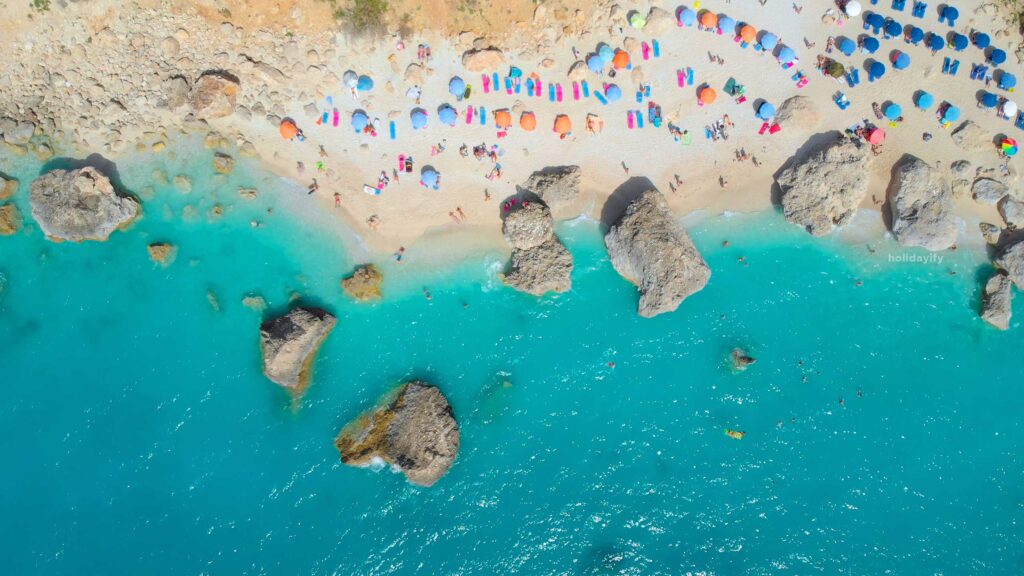Do you wonder about what is Greece population or is Greece overpopulated? The answer is NO. We will explain you is Greece population increasing or decreasing? Keep reading!
Greece Population (LIVE)
10,319,983
The current population of Greece is 10,319,983 as of 2024.
Greece 2024 population is estimated at 10,319,983 people at mid year according to UN data.
Greece population is equivalent to 0.13% of the total world population.
Greece ranks number 87 in the list of countries (and dependencies) by population.
The population density in Greece is 81 per Km2 (209 people per mi2).
The total land area is 128,900 Km2 (49,769 sq. miles)
84.9 % of the population is urban (8,850,409 people in 2020)
The median age in Greece is 45.6 years.
Population of Greece

Known as the cradle of Western civilisation, Greece has thousands of islands in the Ionian and Aegean seas and is known for its beautiful beaches and landscapes, as well as for being the birthplace of democracy and Western philosophy. Its capital city of Athens has been a powerful city as far back as the fifth century BC, and the city is still dominated by its ancient landmarks, such as the Acropolis and the Parthenon. Today, Athens is the largest city in Greece, with a population of over 650,000. This increases to more than three million in the greater urban area of Athens. The city is a key economic center in southeastern Europe and is also the southernmost capital on the European mainland.
Is Greece population increasing or decreasing?
Population in Greece is expected to reach 10,319,983 by the end of 2024, according to Trading Economics global macro models and analysts expectations. In the long-term, the Greece Population is projected to trend around 10.65 Million in 2021 and 10.62 Million in 2022, according to our econometric models.
What is the population of Greece 2020?
The current population of Greece is 10,319,983 as 2024, based of the latest United Nations data. Greece population is estimated at 10,319,983 people at mid year according to UN data. Greece population is equivalent to 0.13% of the total world population.
Population of Cities in Greece and the Greek islands
1. Атина – 3,155,000
2. Солун – 815,000
3. Patra – 168,034
4. Piraeus – 163,688
5. Larisa – 144,651
6. Peristeri – 139,981
7. Irakleion – 137,154
8. Kallithea – 100,641
9. Acharnes – 99,346
10. Kalamaria – 91,617
[adning id=”785″]
11. Nikaia – 89,380
12. Glyfada – 87,305
13. Volos – 86,048
14. Ilion – 84,793
15. Ilioupoli – 78,153
16. Keratsini – 77,077
17. Khalandrion – 74,192
18. Nea Smyrni – 73,076
19. Marousi – 72,333
20. Agios Dimitrios – 71,294
[adning id=”785″]
21. Zografos – 71,026
22. Aigaleo – 69,946
23. Nea Ionia – 67,134
24. Ioannina – 65,574
25. Palaio Faliro – 64,021
26. Korydallos – 63,445
27. Trikala – 61,653
28. Vyronas – 61,308
29. Agia Paraskevi – 59,704
30. Galatsi – 59,345
[adning id=”785″]
31. Халкидики – 59,125
32. Petroupolis – 58,979
33. Serres – 58,287
34. Родос – 56,128
35. Kalamata – 54,100
36. Kavala – 54,027
37. Chania – 53,910
38. Katerini – 53,293
39. Alexandroupoli – 52,979
40. Lamia – 52,006
[adning id=”785″]
41. Irakleio – 49,642
42. Xanthi – 48,221
43. Kifisia – 47,332
44. Agrinio – 46,899
45. Chaidari – 45,642
46. Komotini – 45,631
47. Sykies – 44,955
48. Drama – 44,823
49. Veroia – 44,464
50. Alimos – 41,720
[adning id=”785″]
51. Polichni – 39,765
52. Kozani – 36,481
53. Agioi Anargyroi – 34,168
54. Argyroupoli – 34,097
55. Ano Liosia – 33,565
56. Karditsa – 32,789
57. Nea Ionia – 32,661
58. Rethymno – 32,468
59. Cholargos – 30,840
60. Vrilissia – 30,741
[adning id=”785″]
61. Aspropyrgos – 30,251
62. Korinthos – 30,176
63. Ptolemaida – 30,045
64. Gerakas – 29,939
65. Metamorfosi – 29,891
66. Voula – 28,364
67. Kamateron – 28,361
68. Mytilene – 28,322
69. Giannitsa – 27,817
70. Neapoli – 27,084





